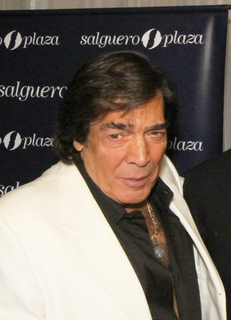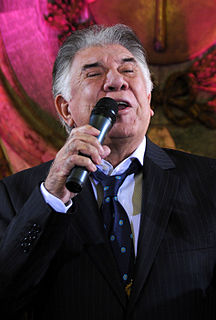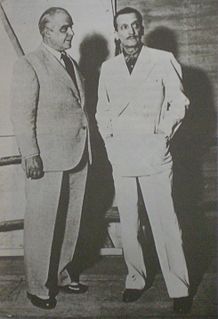See also
- Tanghi Argentini, a Belgian live action short film nominated for an Oscar at the 80th Academy Awards.
Argentine tango or Tango Argentino or is a social dance. It may also refer to:

Tango is a style of music in 2
4 or 4
4 time that originated among European immigrant populations of Argentina and Uruguay. It is traditionally played on a solo guitar, guitar duo, or an ensemble, known as the orquesta típica, which includes at least two violins, flute, piano, double bass, and at least two bandoneóns. Sometimes guitars and a clarinet join the ensemble. Tango may be purely instrumental or may include a vocalist. Tango music and dance have become popular throughout the world.

Argentine tango is a musical genre and accompanying social dance originating at the end of the 19th century in the suburbs of Buenos Aires and Montevideo. It typically has a 2
4 or 4
4 rhythmic time signature, and two or three parts repeating in patterns such as ABAB or ABCAC. Its lyrics are marked by nostalgia, sadness, and laments for lost love. The typical orchestra has several melodic instruments and is given a distinctive air by the bandoneon. It has continued to grow in popularity and spread internationally, adding modern elements without replacing the older ones. Among its leading figures are the singer and songwriter Carlos Gardel and composers/performers Francisco Canaro, Juan D'Arienzo, Carlos Di Sarli, Osvaldo Pugliese, and Ástor Piazzolla.

Humberto Vicente Castagna, better known as Cacho Castaña, was an Argentine singer, songwriter, pianist and actor. Born in Buenos Aires, he initially worked as a shoe cobbler before becoming famous as a bolero singer in the 1970s. Castana composed and sung various compositions and songs, several of which became gold and platinum records. He also starred in multiple films. Castaña's career declined during the 1990s but rebounded after 2003 and he became active in Argentina's stage and festival circuit.

Julio Adrián Lojo Bocca is an Argentine ballet dancer. Bocca spent twenty years as a principal dancer with American Ballet Theatre. From 2010 to 2018 he served as artistic director of the National Ballet of Uruguay, administered by SODRE, the country's broadcasting and cultural authority.
Academia El Tango Argentino is a 1942 black and white Argentine musical romantic drama film directed and written by Julio Irigoyen and written by Julio Porter. It stars Warly Ceriani and Domingo Conte. The movie was filmed in Buenos Aires, Argentina.

`
Adiós Argentina is a 1930 Argentine musical film directed and written by Mario Parpagnoli. The film starred Ada Cornaro and Pierina Dealessi. Libertad Lamarque also made an appearance at the age of 22 as the Bride of the Homeless.

The Soul of the Accordion is a 1935 Argentine tango musical film directed by Mario Soffici and written by José A. Bugliot. It is considered one of the earliest classics of Argentine cinema.

Tita Merello was a prominent Argentine film actress, tango dancer and singer of the Golden Age of Argentine Cinema (1940–1960). In her 6 decades in Argentine entertainment, at the time of her death, she had filmed over thirty movies, premiered twenty plays, had nine television appearances, completed three radio series and had had countless appearances in print media. She was one of the singers who emerged in the 1920s along with Azucena Maizani, Libertad Lamarque, Ada Falcón, and Rosita Quiroga, who created the female voices of tango. She was primarily remembered for the songs "Se dice de mí" and "La milonga y yo".

Jettatore is a 1938 Argentine musical drama film directed by Luis Bayon Herrera. The film premiered in Buenos Aires on August 10, 1938 and starred Tito Lusiardo and Pedro Quartucci. It is a tango musical and is based on a play by Gregorio de Laferrere. The cinematography and editing of the film were performed by Francisco Múgica, who also served as a technical advisor to the films.
El fin de la noche is a 1944 Argentine film. It is notable for being an anti-Nazi film made in neutral Argentina during World War II and set in occupied France. Shot from August to November 1943, the release was put on hold for more than a year, pending authorization by the pro-Axis military government of that time. The film is also remembered in Argentina for Libertad Lamarque's performance of the tango Uno, composed by Mariano Mores and Enrique Santos Discépolo.

Ché OVNI is a 1968 Argentine science-fiction musical comedy film directed by Aníbal Uset and starring Juan Carlos Altavista, Javier Portales, Jorge Sobral, and Marcela López Rey.

Juan Carlos Copes was an Argentine tango dancer, choreographer, and performer. He started dancing with Maria Nieves when he was 17 and she 14, and the pair later married. Copes and Nieves played a leading role in the renaissance in Tango dancing from the 1970s and, particularly, in Argentine Tango following the 1983 restoration of democracy in that country. Copes was the first to create choreographed tango stage shows and also worked on seven films. Later in his career he partnered with his daughter, Johana, from his second marriage.

Mariano Alberto Martínez, known professionally as Mariano Mores, was an Argentine tango composer and pianist.

Raúl Lavié nickname El Negro, is an Argentine entertainer prominent in the Tango genre.

Elías Isaac Alippi was an Argentine actor, theatrical impresario, film director and theater director, who was born and died in Buenos Aires. He is also remembered as an excellent tango dancer.

Luis Pereyra is a dancer and choreographer of Tango Argentino and Argentinian folklore.

German Cornejo & Gisela Galeassi are an Argentinian tango dance duo. They have been dancing together since early 2011, currently dancing for German Cornejo's Dance Company (GCDC), performing as lead dancers for the company. , Gisela and German won the title of World Tango Champions in 2003 and 2005, respectively, at the Campeonato Mundial de Baile de Tango . Both German & Gisela have appeared in numerous TV shows, Films and have toured extensively throughout the world. They have been judges in regional tango championships in Chile, Spain, Italy, Colombia and Japan. The duo is mostly known to Anglo-speaking audiences for their appearance in the American reality television show ¡Q'Viva!: The Chosen. and recently in America's Got Talent. They were winning finalists in Jennifer Lopez & Marc Anthony's TV show Q Viva culminating in the Las Vegas stage show of the same name in May 2012, at the Mandalay Bay Arena. In June 2012 they were JLO's special guest artists at her first-ever concert in Buenos Aires.

María Nieves Rego is an Argentine tango dancer and choreographer who starred with her long time dance partner Juan Carlos Copes in the 1983 musical Tango Argentino.

Tango Argentino is a musical stage production about the history and many varieties of Argentine tango. It was created and directed by Hector Orezzoli and Claudio Segovia, and premiered at the Festival d'Automne in Paris in 1983 and on Broadway in 1985. The production became a world-wide success with numerous tours culminating with a Broadway revival in 1999–2000. It set off a world-wide resurgence of tango, both as a social dance and as a musical genre. Tango Argentino recreates on stage the history of tango from its beginnings in 19th-century Buenos Aires through the tango's golden age of the 1940s and 50s up to Piazzolla's tangos. Most of the dancers in the show did their own choreography.